Introducing plants into interior spaces can greatly enhance aesthetics and bring life into rooms. Strategically hanging plants from ceilings is an impactful yet simple way to elevate different interior design styles.

When thoughtfully placed, hanging plants complement décor and balance spaces beautifully.
This article will a step-by-step guide to incorporating hanging ceiling plants across various interior design schemes. We’ll cover key considerations around plant types, hanging methods, placement strategies, and design style pairings.
Follow these tips to seamlessly integrate hanging greenery that aligns with and boosts your intended aesthetic.
Step 1: Selecting Plant Varieties Suited to Hanging
When choosing plant varieties for hanging displays, consider factors like:




- Growth pattern – trailing or cascading plants work best
- Light and water needs – choose plants suited to indoor conditions
- Weight – lighter varieties place less strain on hanging mechanisms
- Growth speed – quicker growing plants require more maintenance
Key ideas:
- Opt for trailing or cascading plants that naturally grow downwards
- Match plant care needs indoor light and humidity
- Prioritize lightweight varieties to reduce ceiling strain
- Expect faster-growing plants to require more frequent trimming
Step 2: Install Secure and Invisible Hanging Mechanisms
Select hanging mechanisms that are reliable and subtle to keep focus on the greenery. Consider these options:

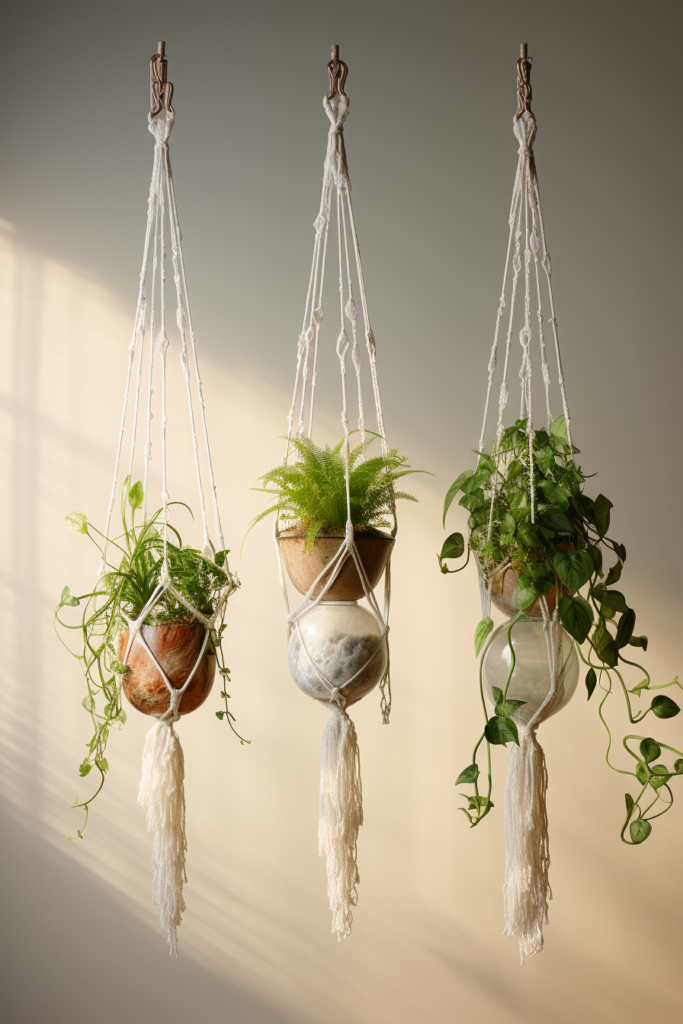


Command hooks – Damage-free adhesive hooks hold up to 5 pounds
Hook screws – Screw sturdy hooks into ceiling beams to anchor heavier plants
Macramé – Attractive woven hangers add visual interest and support lighter plants
Fishing line/nylon thread – Virtually invisible and capable of handling heavier loads
Key ideas:
- Adhesive hooks work for lightweight plants without screws/holes
- Hook screws directly into ceiling beams provide the strongest hold
- Macramé hangers boost aesthetics but don’t handle heavier plants
- Transparent fishing line/nylon thread becomes nearly invisible when installed
Step 3: Map Out Hanging Plant Placement
Map out ahead where plants should hang to complement the space. Consider:
- Room proportions – use hanging plants to balance vertical space
- Furniture arrangements – integrate hanging plants within furniture groupings
- Focal points – accent key architectural details or conversation areas
- Sightlines – avoid impeding lighting, doors, walkways, and desirable sightlines
Key ideas:
- Hang plants at varying heights to balance narrow or tall ceiling shapes
- Coordinate heights within furniture groupings for a cohesive look
- Accent conversational areas but don’t hide participants’ faces
- Check sightlines from entrances, seating areas, and walkways
Step 4: Match Trailing Plant Features to Interior Style
Coordinate hanging plant features with the surrounding interior style. For example:


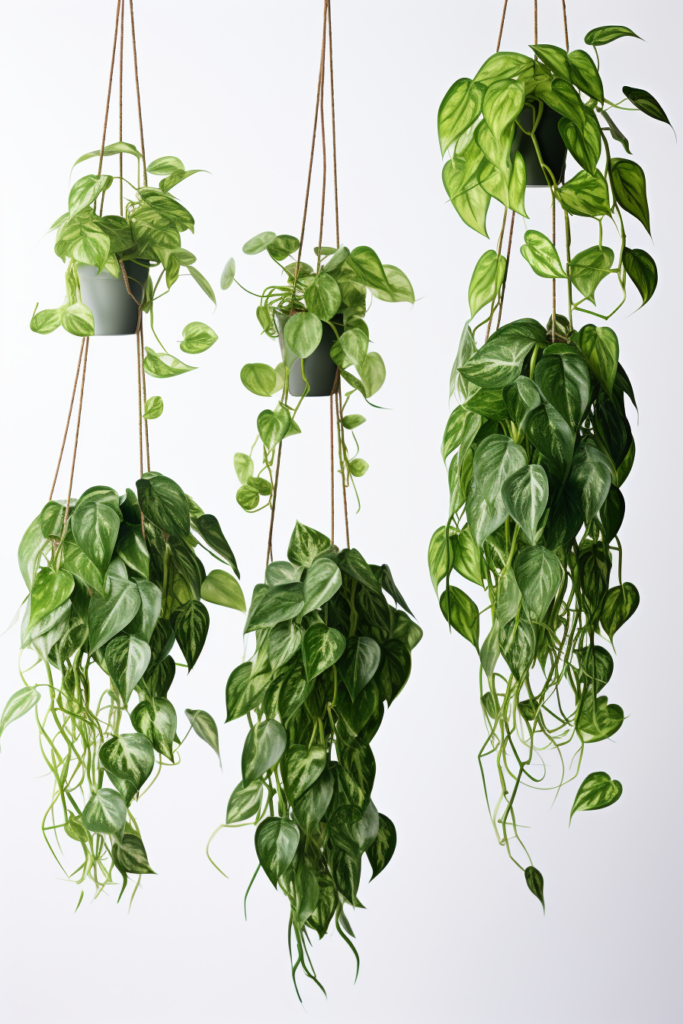
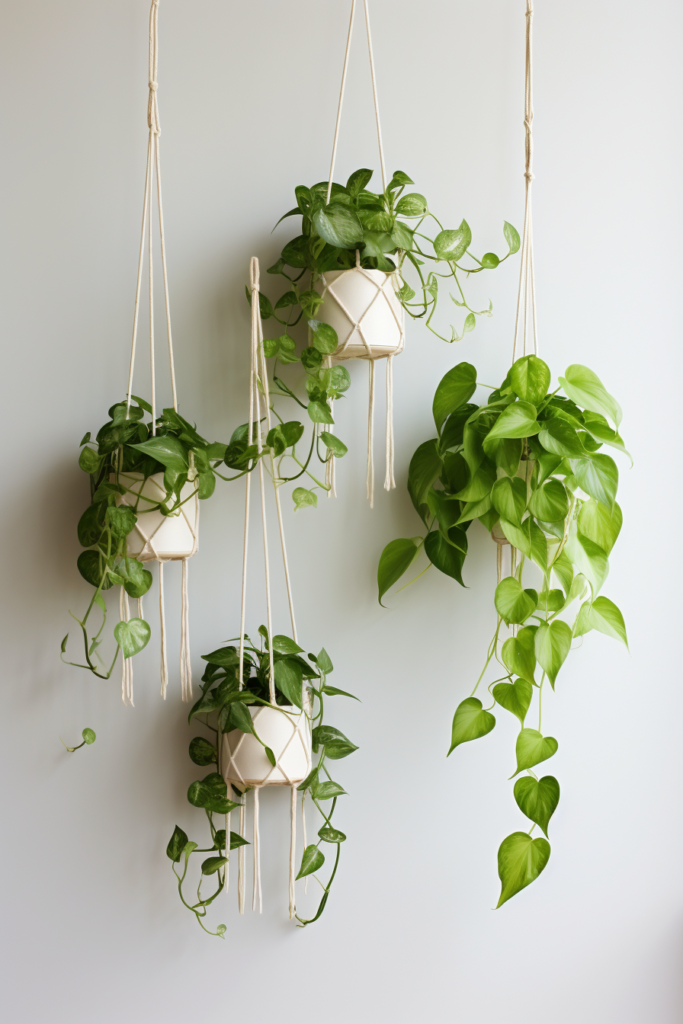
Contemporary – Trailing plants with variegated or colorful leaves and spherical or geometric planters
Nordic – Light, airy Foliage and simple ceramic pots to keep visual calm
Tropical – Lush cascading greenery and woven baskets matching natural textures
Industrial – Hardier trailing varieties and metallic hanging planters
Key ideas:
- Contemporary = Colorful Foliage & geometric planters
- Nordic = Airy plants & neutral ceramic pots
- Tropical = Lush greenery & woven baskets
- Industrial = Hardy plants & metallic pots
Step 5: Accent High Ceilings with Cascading Plants
Drawing the eye upwards with cascading ceiling plants helps elongate rooms and accentuate high ceilings.




25’ ceiling? – Suspend Boston ferns, spider plants, or pothos centered over a seating nook
15’ ceiling? – Try philodendrons, tradescantia, or Scindapsus arranged asymmetrically
10’ ceiling? – Opt for compact varieties like heartleaf philodendrons and baby’s tears
Dormers/beams? Use these architectural elements to hang trailers that drape dramatically
Key ideas:
- Center larger cascades to maximize tall ceilings
- Arrange multiple smaller trailers asymmetrically
- Seek compact varieties for lower 10’ ceilings
- Showcase beams via artfully draped trailers
Step 6: Soften Windows & Walls with Trailing Plants
Trailing ceiling plants artfully soften vertical surfaces like walls and windows.


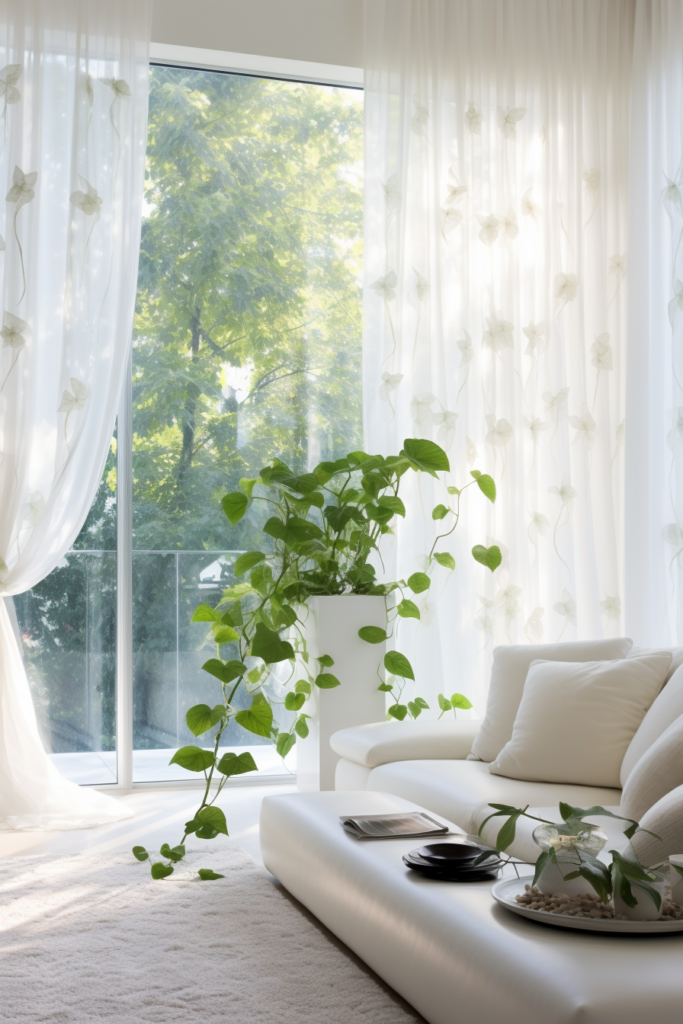

Anchored to curtain rods – Hang pothos to layer greenery above window treatments
Mounted in wall sconces – Sweetheart ivy trails prettily from decorative wall lights
Along half walls/balcony edges – Have philodendrons sweep over edges for an abundant effect
Flanking artwork – Frame art or mirrors with trailing Scindapsus to create organic contrast
Key ideas:
- Hang pothos from curtain rods to soften windows
- Wall sconces can support lighter trailing plants
- Cascade abundant trailers off half walls
- Artfully flank mirrors/artwork to frame and soften
Step 7: Craft an Inviting Entryway with Hanging Plants
Transform sterile entryways into warm, welcoming spaces with thoughtfully placed hanging plants.




Greet with a bold hanger – Make a dramatic statement suspending a large fiddle leaf fig or monstera slightly off-center
Layer heights – Hang trailing heartleaf philodendrons above eye level and dot a round hanging planter of rosette succulents below
Lead the way – Create a trail to guide guests by clustering multiple small macramé hangers leading toward internal rooms
Soften security systems – Obscure unsightly video cameras/control panels with horizontally trailing ivy or ferns
Key ideas:
- Greet dramatically with a large off-center statement plant
- Layer heights, mixing philodendrons up high and rosette succulents below
- Cluster small hangers in a trail to gently lead guests inward
- Soften security systems with artfully placed horizontal trailers
Step 8: Define Separate Zones with Hanging Plants
Utilize hanging plants to define distinct spaces within larger open-concept interiors.




Demarcate seating arrangements – Suspend a bold palm centrally above a lounging configuration to differentiate it from work zones
Indicate kitchen boundaries – Frame cooking areas by aligning vertical plants like bulbous air plants where counters end
Build privacy partitions – Construct natural room dividers assembling wall-mounted rods hung with trailing ivy curtains
Uptempo entryways – Welcome guests to tranquil lounging spaces with light, airy ferns descended around relaxation areas
Key ideas:
- Hang statement plants centrally above sitting areas
- Create verdant frames around kitchen boundaries
- Curtain off sections with trailing divider walls
- Set a peaceful mood with descending entryway ferns
Step 9: Infuse color with patterned Foliage
Although green Foliage has its virtues, spaces begging for a color pop can benefit from hanging plants with patterned leaves.
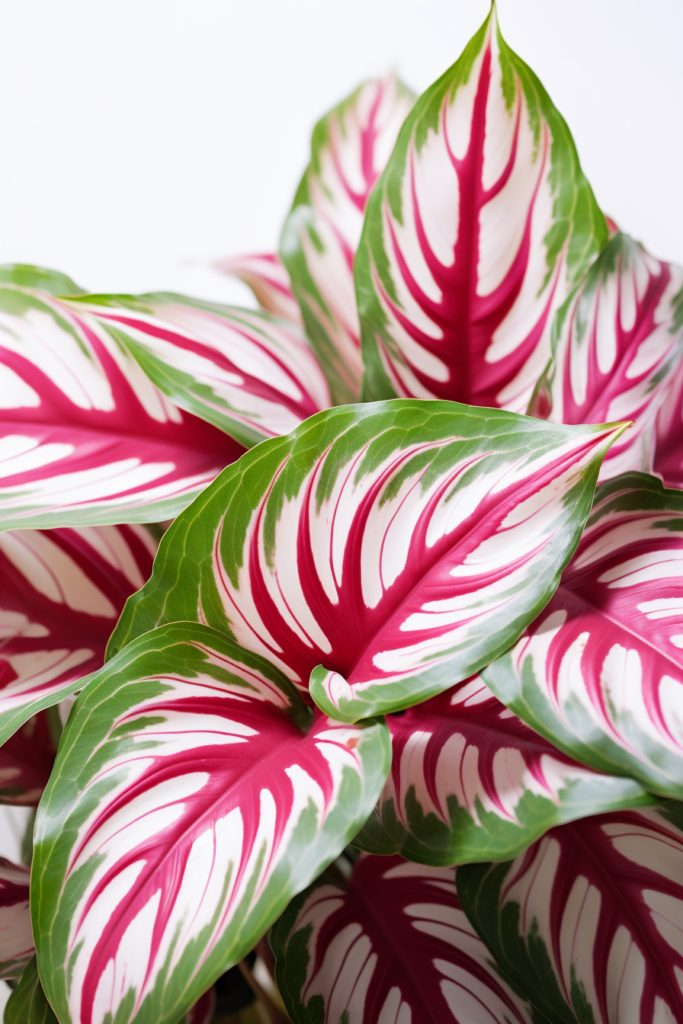



Contemporary spaces – The pink stripes of calathea medallion plants enliven modern spaces
Bohemian settings – Vining Scindapsus pictus offer creamy yellow accents befitting eclectic rooms
Brights-lover areas – Fuchsia-swirled nerve plants’ vivid trails energize colorful décor
Nature-inspired rooms – Heartleaf philodendrons’ chartreuse leaves resemble Impressionist brushstrokes
Key ideas:
- Calathea medallion stripes invigorate modern aesthetics
- Scindapsus picture yellow vines fit with bohemian styles
- Nerve plant scarlet trails electrify colorful spaces
- Philodendron lemon shades feel Impressionistic amidst nature-themes
Step 10: Showcase Decor While Hiding Eyesores
Strategically position hanging plants to reveal attractive architectural elements while discreetly obscuring eyesores.
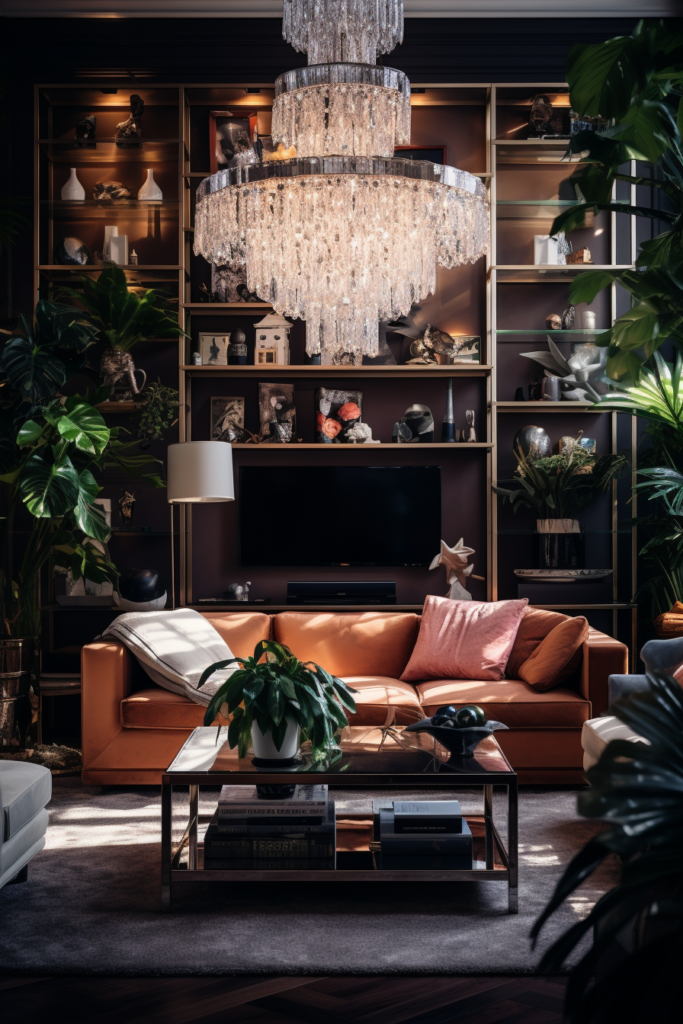



Spotlight pretty arches/domes – Ensure sightlines to graceful structural features while veiling cluttered storage zones
Reveal artwork – Pull lovely paintings and photographs into focus while using plant fallbacks to hide unsightly electronics and gear
Conceal damage – Unobtrusively mask scuffed corners or temporary repair situations with suspended pots of ferns
Add dimension to plain walls/ceilings – While essentially covering boring flat planes, trailing scindapsus also creates attractive organic texture and depth
Key ideas:
- Spotlight pretty architecture and hide cluttered storage
- Train focus on fine art while discreetly masking electronics
- Temporarily obscure damage without looking like a coverup
- -Transforms plain areas by overlaying appealing dimension
Conclusion
Hanging plants expand design possibilities, permitting you to artistically enhance vertical spaces often neglected in interior décor schemes. By providing pleasing focal points along formerly empty planes and barriers, suspended plants foster a more engaging ambiance.
Strategically installed hanging gardens breathe organic life into regulated interior geometries, infusing a spirit of rejuvenation. Yet take care to deliberately curate lushness; haphazard overgrowth stresses décor rather than easing it.
When thoughtfully balanced, however, vibrant ceiling trailing plants lend interior spaces grandeur and style limited only by the imagination.
Follow Quiet Minimal on Pinterest for more home design tips and inspiration.


